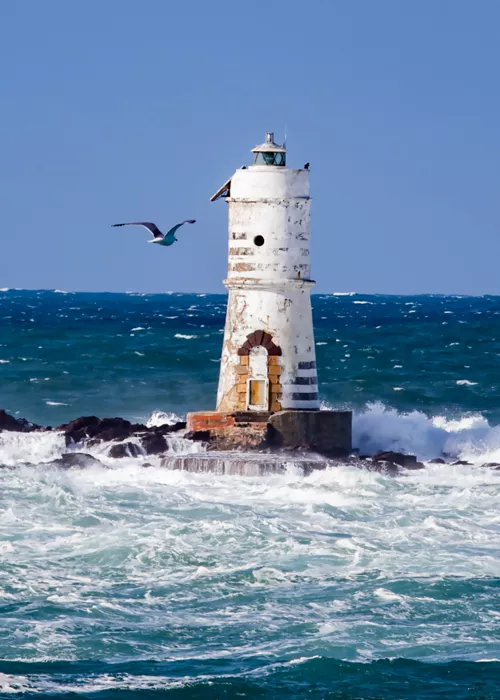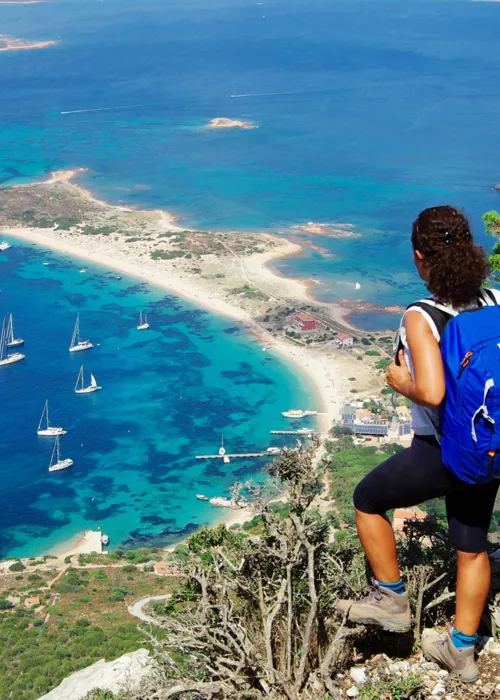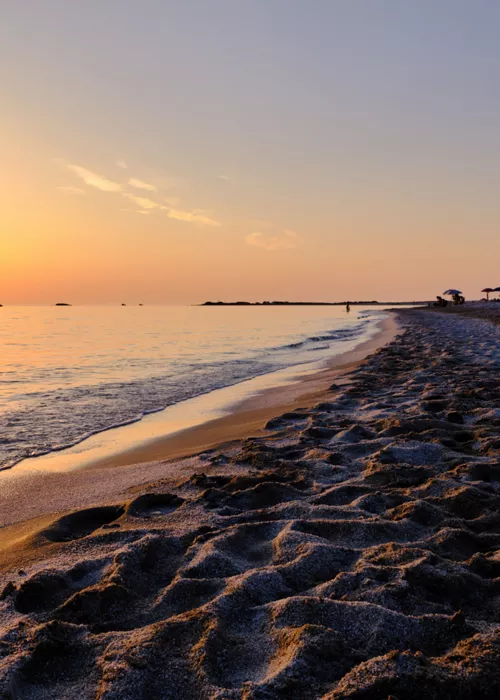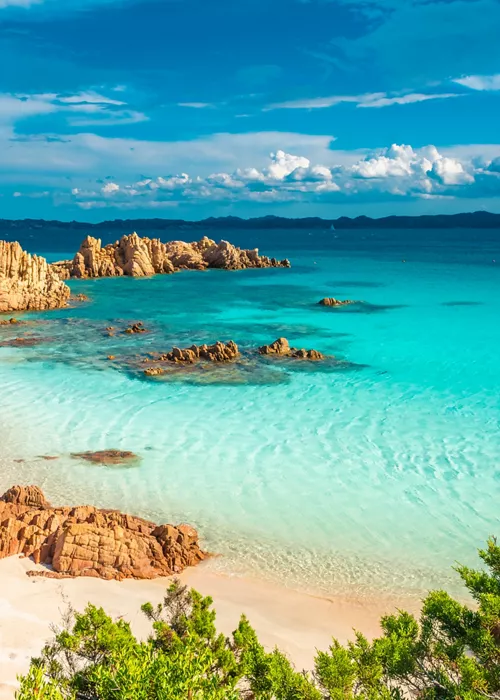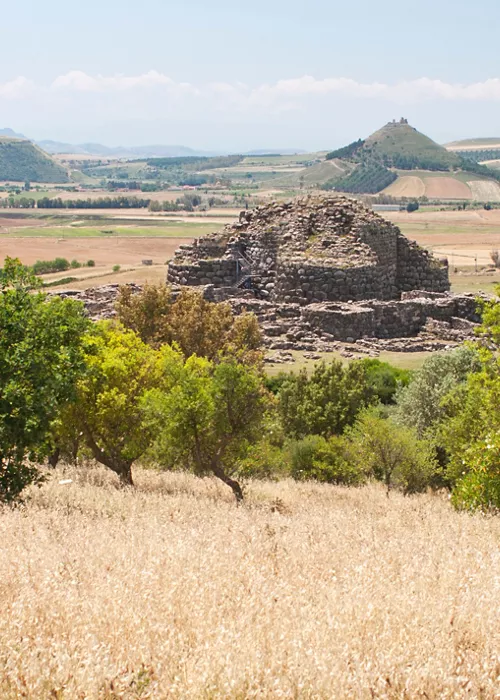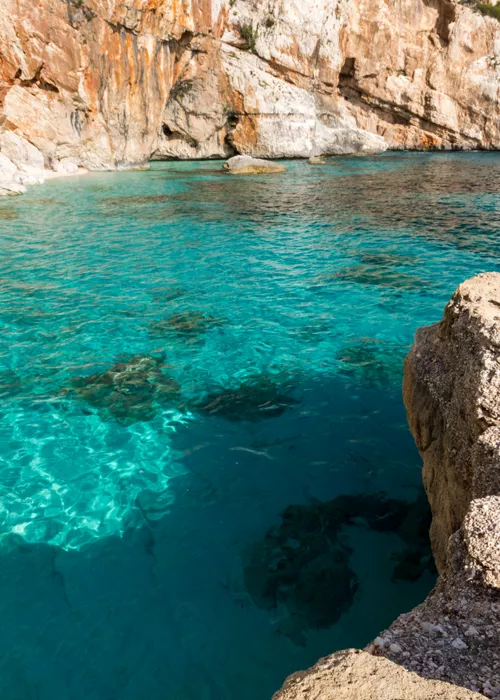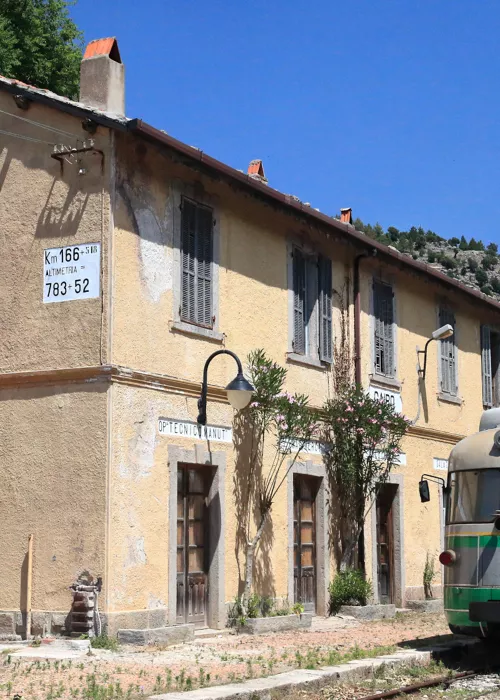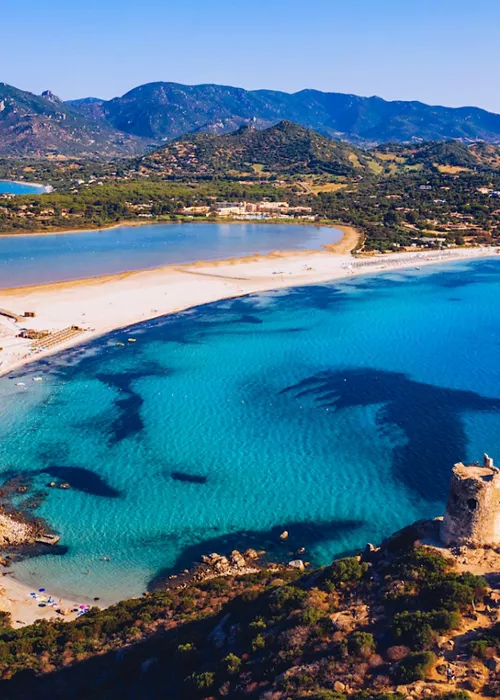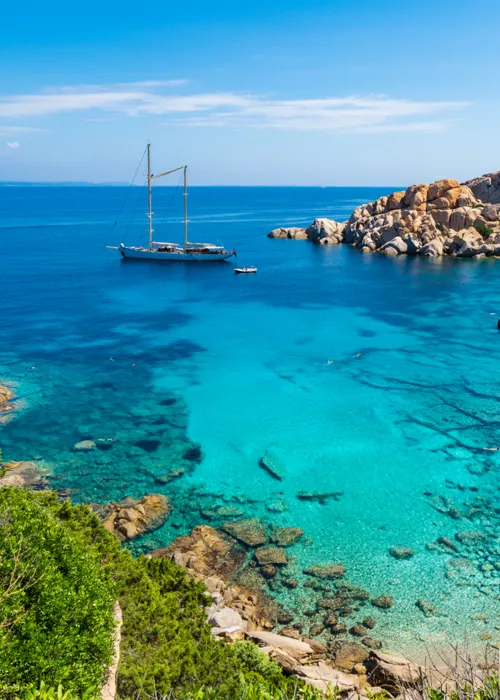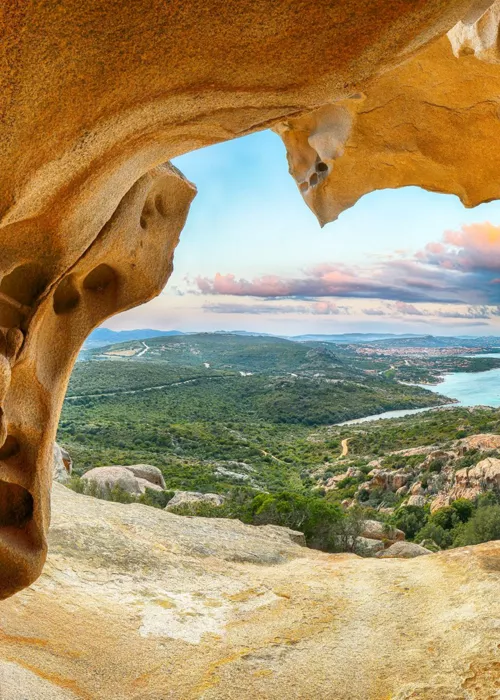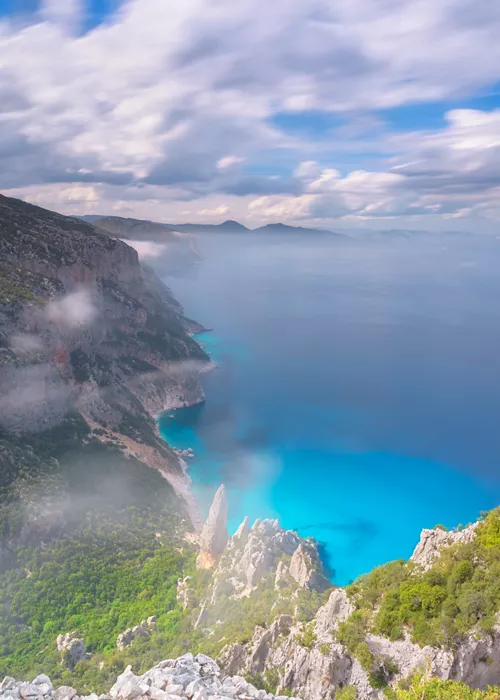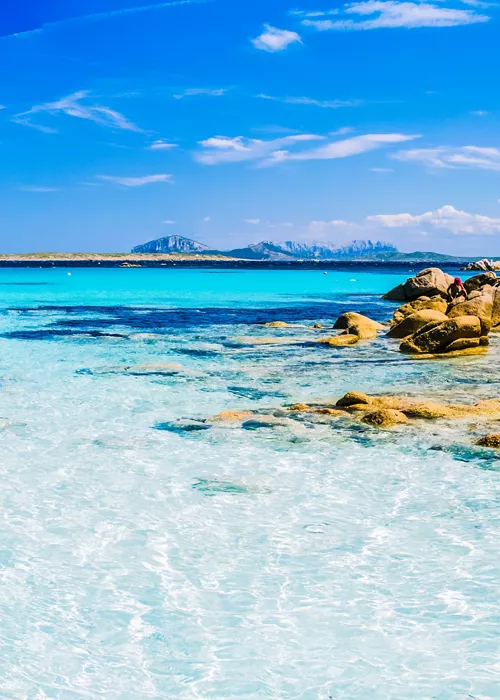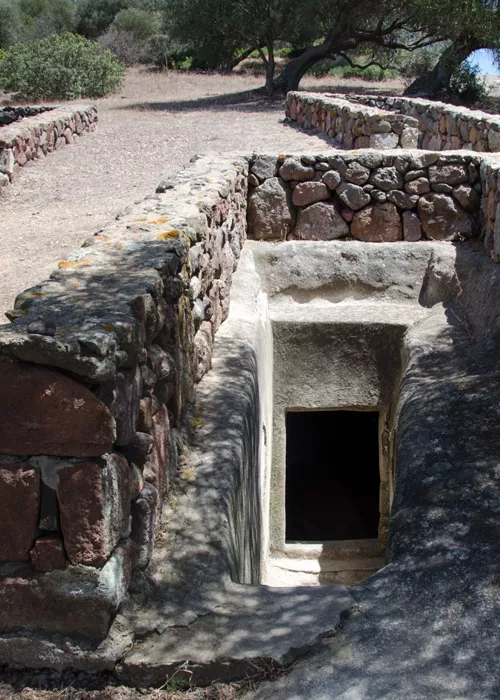Must See in Sardinia’s South West: Sant’Antioco, Tratalias and Carloforte
12 minutes

Index
Mention Sardinia, and Italy’s island of dreamy beaches comes to mind. But did you know that Sardinia has a number of islands aside from the island of Sardinia itself? Most are uninhabited and no more than day trip excursions, but the islands of the Sulcis Archipelago offer visitors authentic and quaint villages unlike anywhere else in Sardinia. Come visit the two islands of the Sulcis Archipelago, some of the earliest inhabited islands of the Mediterranean with Ligurian and Tunisian influence.
Sant’Antioco

A speck of an island off the south west tip of Sardinia, it only takes about 20 minutes to cross Sant’Antioco by car and less than one hour to drive entirely around it. Yet, Sant’Antioco packs a punch with a plethora of archaeological sites spanning many millennia, some of the most beautiful beaches of Sardinia, and a calendar chock full of summer events and festivals.
Top 5 things not to miss
- Climb to the top of Forte Sabaudo Su Pisu for views over Sant’Antioco
- Take a tour and have a tasting at the wine cooperative Cantine Sardus Pater
- Bike around the Salt Works at sunset
- Swim in the crystal clear waters at Spiaggia Coaquaddus
- Try fregula sarda with clams and bottarga
Of all the villages we visited in Sardinia, Sant’Antioco is certainly the largest. The island has a population of 11,000 year-round residents, and swells even larger come summer when tens of thousands visit. Yet, Sant’Antioco is still relatively unknown.
Visiting in October, we found a warm, tranquil paradise offering unspoiled beaches, nature, and authentic charm.
Each morning as we woke up and walked our dog along the seaside promenade steps away from our B&B, fisherman were arriving back in their tiny boats. The promenade is like an unofficial daily fish market, and locals rise early to see what catch they can purchase directly from the fisherman.
Climbing up the sloping streets of the colorful town, you come to many eras of archaeological sites. Inhabited since the 3rd millennium BC, you’ll find pre-Nuragic and Nuragic remains, a Roman catacomb complex and Italy’s oldest town: Sulky, founded by the Phoenicians in 770 BC.
With a number of museums and archaeological sites spanning thousands of years, you certainly don’t lack for things to do. I always seek out some of the highest vantage points, and the Forte Sabaudo Su Pisa offers one of the best panoramic views over Sant’Antioco.
And a view is about all the fort ever offered the residents of Sant’Antioco. Its construction was ordered by the Royal Secretary of State and of War at the expense of the citizens of Sant’Antioco. Along with the order to construct the fort, the citizens also had to organize a volunteer army to defend their own island. But before the fort could even be finished, pirate fleet of ships from Tunisia invaded and triumphantly returned to Tunisia three days later with 158 slaves captured from Sant’Antioco.
On the other end of Sant’Antioco from the fort, we found ourselves at Cantina Sardus Pater. Established as a wine cooperative on Sant’Antioco island in 1949, Sardus Pater focuses primarily on producing wines from the Carignano del Sulcis grape variety grown right here in Sant’Antioco.
Truly a historic grape variety, it’s thought to have been brought to Sardinia by the Phoenicians or Carthaginians. Grape cultivation on Sant’Antioco dates back to likely 575 BC, and grapes have always thrived. And the sandy soils of Sant’Antioco provided a natural protection against the devastating phylloxera that nearly wiped out winemaking in Europe.

Visitors can tour the cooperative with a local and knowledgeable guide. We were lucky enough to visit during the Carignano harvest. Our guide, Melania, gave us a fantastic tour of the cooperative. We finished with a delicious tasting of the sparkling AD49, produced in the Champagne method, and a trio of Sardus Pater’s best Carignano del Sulcis DOC wines all paired with local cheese and cured meats from the Sulcis.
Grapes aren’t the only thing to be cultivated in Sant’Antioco. Salt has been farmed here for nearly a century, and is one of the main industries of the area along with fishing. The Sant’Antioco Salt Works is both salt flats and a nature reserve dotted with pink flamingos. Locals love hiking and biking the trails here, and know that the Salt Works becomes otherworldly at sunset.
We went on a fat e-bike tour, first biking through the marshlands filled with pink flamingos and past the ancient menhirs of sa Mongia and su Para before reaching the salt flats. We even climbed a salt mountain, before continuing on through the ponds where precious fleur del sel is produced. Sant’Antioco’s famous mistral (wind) blew foamy salt across the landscape like tumbleweeds blowing across a desert.
As the sun set, the sky painted the salt in a palette of pinks unlike anything I’ve seen before. It’s truly a must-see when visiting Sant’Antioco.
Sant’Antioco: Useful Information
Best time to visit: Far away from the mindset of mass tourism, Sant’Antioco is a fairly seasonal destination with many activities and even restaurants ceasing or greatly reducing operating hours outside the months from May to October. To experience all that Sant’Antioco has to offer, it’s best to visit within these months.
How to get there: Sant’Antioco is an island off the south-west tip of Sardinia, but connected by a kilometer-long artificial causeway. It can be reached in about 90 minutes from Cagliari, and is best explored by car. Sant’Antioco can also be reached by both bus and train (with a transfer to a bus).
Tratalias

Once the main town of the Sulcis region, Tratalias emerged sometime around the year 1000. It was a likely a citadel enclosed with three arches. The village thrived for several hundred years during its period as an episcopal see. But human interference changing the course of the river would quite literally change Tratalias’s course of history.
Top 5 things not to miss
- Take a walk around the ghost town
- Visit the Museo del Territorio Trataliese
- Visit the Cattedrale di Santa Maria di Monserrato
- Buy artisan soaps as a souvenir from Tratalias
- Visit the nearby Nuraghe Cuccu
Once an important town in the Sulcis region in the south west of Sardinia, Tratalias’s history changed in 1954. The Monte Pranu dam was built on the Rio Palmas, creating the artificial Lago Monte Pranu. The construction started to pose hygienic problems for the inhabitants of Tratalias due to the resurgence of aquafiers. Though the residents tried to contend with the problems for nearly 20 years, they ultimately abandoned Tratalias in 1971 to rebuild a new town nearby.
What remains of Tratalias is perfectly preserved, seemingly like its residents picked up and moved only recently. The preservation is actually the result of a restoration project in order to tell the story of the abandoned town.
We arrived in Tratalias on a hot Sunday afternoon. The wind was whipping through the town. There wasn’t another soul in sight. Dogs barked in the distance. It was all a bit eerie as we explored the deserted streets.
More recently the residents have breathed a bit of new life in to the old Tratalias. A few shops have taken up residence in the village like the shop Iliana selling artisan handmade soaps made right here in Tratalias. There’s also a small museum, the Museo del Territorio Trataliese, that tells the story of the original village and a there’s even a restaurant where visitors can taste local specialties.
The gem of Tratalias is its former cathedral Santa Maria di Monserrato, located right at the village’s heart. Built between 1213 and 1282, the cathedral is one of the most beautiful and intact Romanesque monuments in Sardinia.
In Tratalias’s heyday, the cathedral served as the seat of the bishop for nearly three centuries until the diocese was transferred to Iglesias in 1503. The cathedral is open when the museum is open, but sadly wasn’t for us to have a look inside during out visit. There’s still plenty to admire on the façade, including capitals with sculptures from Pisa on them and the bas-relief of two lions. Be sure to circle the entire cathedral and take it in from the numerous angles of the various streets radiating out from it.
In summer, some festivals are even held in the abandoned town. The tradition of Sa Festa Manna is also still celebrated. It’s a long tradition of the statue of the Virgin of Montserrato being paraded back to Tratalias from Iglesias, where the statue is kept. It’s taken place on Ascension Thursday every year since 1503 when the diocese moved from Tratalias to Iglesias. With the parade in traditional costumes that culminates with a feast of Trataliese dishes like snails, curruscionis de casu friscu (a local type of cheese ravioli), roast suckling pig on the spit and lamb all served with Carignano wine, it’s an occasion to plan a visit to Tratalias around.
Of course, none of the shops or attractions were open during our visit. We were left with true ghost town vibes as we wandered the colorful streets with faded posters of summer’s events rustling in the wind.
Tratalias: Useful Information
Best time to visit: Tratalias is like an open-air museum and can be visited any time. If it’s true ghost town vibes where time feels like it stands eerily still, visit in the shoulder or off-season as we did. Be sure to check the opening days and times of the Museo del Territorio Trataliese in order for the museum and cathedral to be open. Of course, Ascension Sunday or the summer period when festivals are in full swing is the liveliest time to experience Tratalias.
How to get there: Tratalias is most easily reached by car. It is around a 1-hour drive from Cagliari. It’s also possible to reach Tratalias by bus from Cagliari in 2 hours 30 minutes. For an adventure, rent a bicycle and make the 16-kilometer ride to Tratalias from Sant’Antioco in around 1 hour.
Carloforte

About 10 kilometers off the coast of Sardinia lies a little island. Located in the Sulcis archipelago, it’s the western most point of Italy. The island is San Pietro and its only settlement is Carloforte. Founded in 1738 by Genoese fisherman who had colonized the Tunisian island of Tabarka, the island retains its residents’ Ligurian dialect, ways of life and culture to this very day. Essentially, Carloforte is a little satellite of Liguria transplanted in Sardinia.
Top 5 things not to miss
- Wander the maze of streets of Carloforte
- Visit the Museo Civico Casa del Duca
- Rent a boat and see Isola San Pietro from the water
- Visit the Tonnara de La Punta
- Try Carloforte red tuna
Arriving to Carloforte by the Carloforte-Calasetta ferry, you might wonder if you’re even in Sardinia anymore. The look, and even the feel, is inherently different than anywhere else we’d encountered in our adventure through Sardinia
Carloforte is Isola San Pietro’s only settlement. The village’s architecture with balconies and Arab influences, maze of stairways and jumble of narrow alleys all set against a backdrop of the Mediterranean earned Carloforte a place among the Borghi Più Belli d’Italia (Italy’s most beautiful villages). The buildings are the bold, bright colors like the villages of Cinque Terre. Facades in pops of fuschia between lemony yellow and punctuated with orange. It’s a photographer’s dream.
In fact, one spot in particular has inspired painters, photographers, poets and singers. The arch on Via Solferino is Carloforte’s most visited spot, despite locals knowing neither when or why it was built.
There is a small museum, the Museo Civico Casa del Duca set in the guardhouse of the oldest fortification, where you can learn of Carloforte’s history. But its’ true identity can be found by wandering the labyrinth of streets, and climbing up and down Carloforte’s countless stairways. It’s in these streets, called caruggi, that you hear the dialect and encounter the daily life of these Carlofortini who have managed to retain an identity all their own.

Head out of the village of Carloforte to the Tonnara. It’s at this point that the famed red tuna (also known as bluefin tuna) enters the Mediterranean from the Atlantic, passing directly by and making Isola San Pietro an ideal spot for tuna fishing. The tuna processing plant is one of the oldest in the Mediterranean, and a must see with its beautiful location on the rocky point. The fishing methods used are still the traditional ones, with all parts of the tuna used in various ways. There’s even the possibility to take a guided tour and have a tasting of Carloforte’s kilometer zero tuna tins produced right at the plant.
With the abundance of tuna making tuna fishing a main industry of Carloforte, it’s no surprise that the prized tuna is the dish of this village. What is surprising, though, is the dozens and dozens of ways tuna shows up in recipes.
You simply can’t leave Carloforte without trying the tuna. We headed to Al Tonno di Corsa for their tuna tasting menu. Truly for the tuna lover, each course is a delight with no less than a dozen different tuna recipes making up the meal. Stand out dishes for both me and my husband were the smoked tuna topped with a tomato relish, a cured tuna with seasonal figs, and the gnocchi with tuna ragu so addictive that the table next to us ordered a second bowl of it instead of dessert.
Obviously, the sea is an essential part of life in Carloforte. And while the village lures you to linger with its character and charm, the jagged coastline of Isola San Pietro must be seen. Much of it is inaccessible by car, so the best way to take in the many inlets, jagged rocks and enchanting coves is from the sea itself.
We rented a boat at the marina steps from our seaside hotel. Small boats are available to rent even without a boating license. They gave us a map, pointed out some calm coves perfect for anchoring for a picnic lunch onboard and a swim, and sent us on our way.
Having the freedom to take our time circumnavigating Isola San Pietro was idyllic. We birdwatched a nesting colony of Eleonora's Falcon, which the island is famous for, in a rocky inlet. We took a leisurely dip in the crystal-clear waters of another cover. And we snacked on focaccia, the Ligurian street food favored by local beachgoers, local pecorino cheese and cured meats, and a delicious local cookie called the pé de porcu while admiring the impressive promontory of Capo Sandalo with its 19th century lighthouse.
Just as we rounded the point of Tonnara, dolphins came to play. They jumped out of the water, perhaps for a curious look at us, and swam right alongside our boat. It was truly the most perfect way to end our day exploring Isola San Pietro by sea.
Carloforte: Useful Information
Best time to visit: Carloforte can be visited year-round, though many attractions and activities operate from Easter to October.
Carloforte’s summer calendar is full of events from May to September that includes a musical festival, theater and cultural events sure to delight any interest. Not to be missed is the internationally renowned Girotonno, a culinary event with live cooking shows and tuna in countless imaginative recipes.
How to get there: Carloforte is on Isola San Pietro, only accessible by boat. There are numerous ferry sailings from both ports of Portovesme and Calasetta, reaching Carloforte in just 40 minutes from Portovesme and in 30 minutes from Calasetta. Both ports are accessible by public transportation, making Carloforte a destination in Sardinia where a car isn’t necessary to explore.
Carloforte itself is mostly pedestrianized and the entire village is easily covered on foot. Many locals get around Isola San Pietro to the beaches by fat e-bikes, which are perfect for the terrain and giving some assistance to make it up the island’s hills.
Article written about the experience of Jennifer Dombrowski.
Author: Jennifer Dombrowski – Luxe Adventure Traveler


